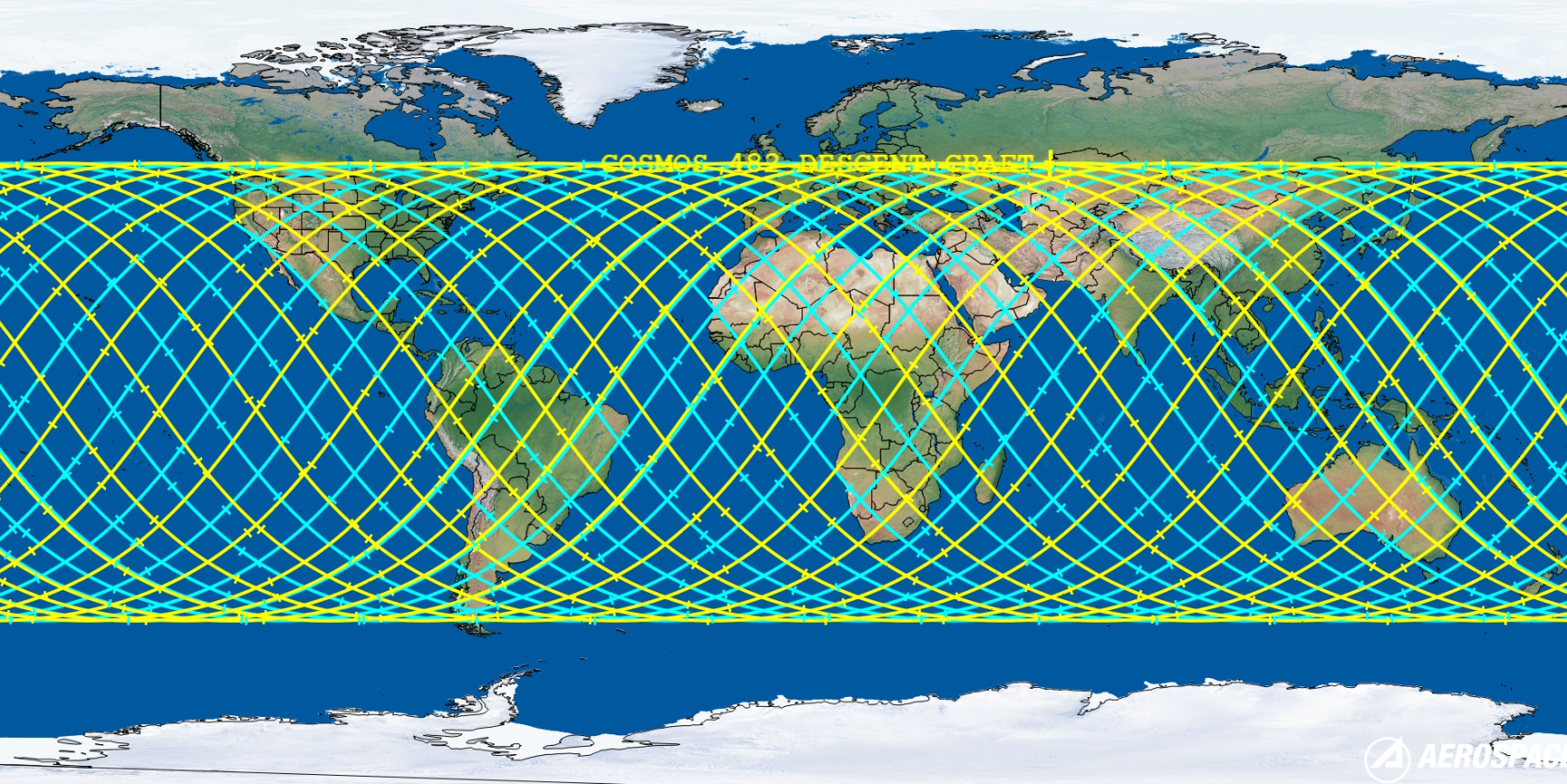
The uncontrolled reentry of space debris tends to capture the general attention of the world, at least when it's big enough and solid enough that it's actually likely to actually hit the ground somewhere. This week, the prospect of a Russian (Soviet, in fact) probe dropping into someone's back yard is too enticing for the media to pass up.
CNN's article on the reentry of Cosmos 482 — AKA Venera 8, a craft launched in 1972 that failed to make much headway toward Venus — touches on all the aspects a general audience may be curious about.
Many of these matters we touch on in our FAQ on reentry broadly and Cosmos 482 specifically. Marlon Sorge, of Aerospace's CORDS debris-tracking group, offered a bit more color on the topic to the news outlet.
"It is quite dense, whatever it is, because it had a very low point in its orbit, yet it didn’t decay for decades. So it’s clearly bowling ball-ish," he explained. A denser object will retain more momentum in its original trajectory, resisting orbital decay caused by drag from the atmosphere. While we don't know its exact characteristics, we do know its general size and can infer a lot from the many times it's been observed by sensors around the world.
Sorge and others provide a bit more background on the object, though we won't know where it's likely to come down until its orbit starts to decay more seriously. Even then, as they point out, you're still more likely to be struck by lightning than have Cosmos 482 drop on your house — its destination is likely the ocean covering most of the planet, or the middle of nowhere. No doubt a few people will still choose to stay inside this weekend anyway.
Should the unexpected happen, however, and this Soviet probe drops somewhere you can reach it, "Please don't mess with it," said Sorge. "Call the authorities." (Probably the fire department to begin with.)
Keep an eye on the CORDS prediction page for the object to see the latest estimate of where and when it will come down, and our FAQ for more info.
